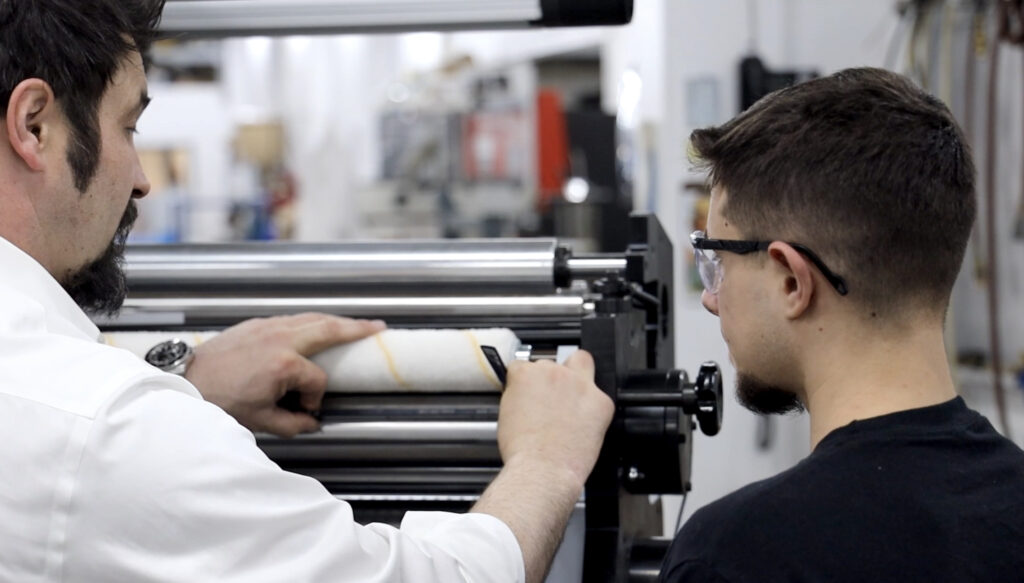Buzzwords are something we have all become accustomed to over the years. They involve new trends, better ideas for living, or ways to help protect the earth for future generations. Sustainability has become a word that most of us are familiar with at this point. But what does it mean and how does it apply to the printing and packaging industry?
What is “Sustainability”
Technology has made it very easy for today’s consumers to be extremely savvy, being able to access any kind of data with just a few simple clicks of a mouse or keyboard. Companies cannot loosely throw around that they are “green,” “sustainable,” or “environmentally friendly” without being able to back up that claim.
Sustainability is the procedure of responsibly using natural resources now so future generations can use and enjoy them, too. The common terminology used in the packaging industry includes eco-friendly, biodegradable, and bio-renewable.
Eco-friendly:
Sustainable handling of packaging materials is referred to as eco-efficiency. The U.S. Department of Agriculture provides numerous programs with incentives for companies to use more sustainable agricultural products in their goods.
Biodegradable:
The term “biodegradability” refers to a material’s ability to be degraded by microorganisms. Compostability is more pertinent for sustainability when microorganism breakdown occurs within a predetermined time frame and with the crucial variables of water, oxygen, and temperature specified.
Bio-renewable:
Bio-renewable inks are those developed from an insect, animal material, plant, and/or a tree and can include oils, waxes, resins, gums, or solvents. The National Association of Printing Ink Manufacturers (NAPIM) assigns an index number to inks that correlate to the ink’s bio-renewable content percentage.
Companies that use sustainable inks that produce less waste, boost productivity, or support the synergy of the printing process through interactions between materials and printing ink, could be labeled as being “green.” Customers are more likely to show loyalty to brands that actively try to improve their environmental practices.
How Sustainability Applies to the Printing/Packaging Industry
Today, retailers have a significant influence on packaging design and standards. For instance, Walmart seeks packaging that is efficient, safe, inexpensive, recyclable and supports sustainable materials. Target anticipates that its packaging will adhere to the EPA’s Greener Living Sustainable Packaging Program standards, using recycled or renewable materials and containing no chemicals of “high concern.”
Packaging printers must demonstrate a willingness to adhere to the rules and regulations established by major stores like Walmart, Target, and Home Depot. Partnering with brands that use printing converters that incorporate ecologically friendly procedures is a priority for these businesses and many others.
How to Increase Your Printing Sustainability
On a larger scale, printers must supply packaging to brand-owner clients that satisfy retailer green scorecard requirements, including lighter packaging to save on truck fuel, longer shelf lives and less waste, modified recycling streams, compliance with compostability standards, and more.
Printers need to optimize processes, cut inventory, and reduce toxic organic matter and waste as part of their small-scale environmental responsibility efforts.
Steps to increase your printing sustainability can include:
-
- Use quality printing materials for more efficient printing processes
- More efficient planning and organization of inventory and shipments
- Implementing quality printing materials that are longer-lasting and more durable
</ul >
Flexographic printing is invaluable for companies looking to achieve sustainability initiatives. Flexo printing reduces the amount of energy used, can use recyclable materials or flexible packaging without sacrificing print quality, utilizes sustainable inks, and uses innovative equipment.
Tamarack® Products is highly regarded with more than 50 years of experience in developing web-finishing equipment that is both high-tech and accurate. Our skilled technicians can completely customize your in-line or off-line web-finishing equipment to provide flexible and modular solutions that can be easily integrated with your flexo press.
Tamarack® Products delivers top-quality converting and printing equipment that is scalable and can be integrated onto your existing flexo press. We can custom design in-line or off-line finishing equipment to meet precise requirements in the printing and packaging industry. Contact us to learn more about how our flexible solutions can add to the overall sustainability of your printing and packaging processes.





